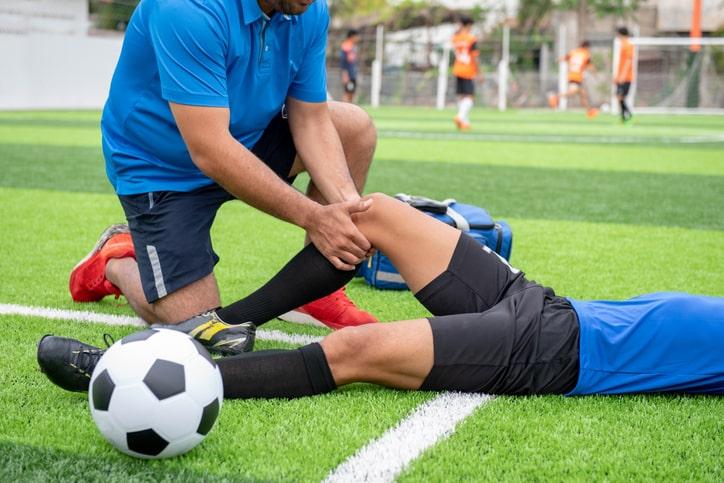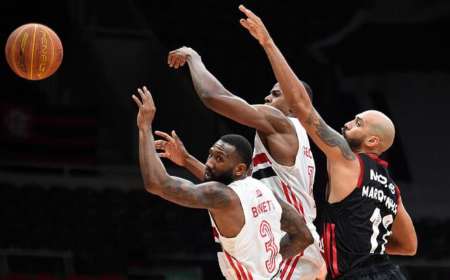Sports injuries are often viewed as temporary setbacks for athletes, but new insights from Cedars-Sinai reveal a more concerning long-term consequence: the early onset of arthritis. Medical experts warn that certain injuries sustained during physical activity can accelerate joint damage, leading to chronic pain and limited mobility well before the typical age for arthritis diagnosis. This article explores the connection between sports-related injuries and premature arthritis, highlighting prevention strategies and treatment options emerging from Cedars-Sinai’s latest research.
Understanding the Link Between Sports Injuries and Early-Onset Arthritis
Sports injuries, particularly those involving joints, can significantly increase the risk of developing arthritis much earlier than expected. Traumatic incidents like ligament tears, fractures, and meniscus damage often result in abnormal joint mechanics and chronic inflammation. Over time, these issues contribute to the deterioration of cartilage, accelerating the onset of arthritis symptoms such as pain, stiffness, and swelling. Notably, injuries that fail to fully heal or are repeatedly aggravated during athletic activity can set the stage for osteoarthritis development in younger individuals, sometimes even decades before typical age-related cases emerge.
Understanding which injuries pose the greatest risk offers key insights for prevention and management. Athletes suffering from the following conditions should be particularly vigilant:
- Anterior cruciate ligament (ACL) tears
- Meniscal cartilage injuries
- Fractures involving joint surfaces
- Repeated joint sprains or dislocations
| Injury Type | Common Sports | Arthritis Risk Level |
|---|---|---|
| ACL Tear | Soccer, Basketball, Football | High |
| Meniscus Tear | Running, Skiing, Tennis | Moderate to High |
| Joint Surface Fracture | Contact Sports, Cycling | High |
| Recurrent Sprains | Basketball, Volleyball | Moderate |
Common Sports Injuries That Increase Arthritis Risk
Sports injuries that involve joint damage or chronic stress can significantly accelerate the onset of arthritis, particularly osteoarthritis. Among the most prevalent are anterior cruciate ligament (ACL) tears, which frequently occur in high-impact sports like football and basketball. These injuries often lead to instability in the knee joint, promoting cartilage deterioration over time. Similarly, meniscus tears compromise the knee’s shock-absorbing function, increasing wear and tear on cartilage and ultimately raising arthritis risk. Injuries to the shoulder and ankle, such as rotator cuff tears or recurrent ankle sprains, also contribute to early joint degeneration by disrupting normal mechanics and causing chronic inflammation.
Below is a summary of common injuries linked to arthritis development in athletes:
| Injury Type | Typical Sports | Arthritis Risk Factor |
|---|---|---|
| ACL Tear | Soccer, Basketball, Football | High joint instability & cartilage wear |
| Meniscus Tear | Running, Skiing, Tennis | Reduced shock absorption, cartilage stress |
| Rotator Cuff Tear | Baseball, Swimming, Weightlifting | Chronic inflammation & joint degradation |
| Ankle Sprain | Basketball, Volleyball, Trail Running | Recurrent instability & cartilage damage |
Addressing these injuries promptly with proper rehabilitation and joint care is essential to mitigate long-term arthritic changes. Early intervention not only preserves joint function but also lowers the likelihood of degenerative diseases manifesting prematurely in athletes’ lives.
Long-Term Effects of Untreated Joint Damage in Athletes
When sports injuries go untreated, microdamage within the joint structures can gradually escalate, compromising the integrity of cartilage and surrounding tissues. Athletes may initially ignore minor discomfort or swelling, but this neglect sets the stage for chronic inflammation, cartilage degradation, and eventual joint instability. Over time, these changes accelerate the wear-and-tear process, often resulting in early-onset arthritis that severely limits mobility and performance.
The silent progression of untreated joint damage is characterized by several key factors:
- Persistent inflammation causing ongoing cellular damage.
- Altered joint mechanics that increase stress on unaffected areas.
- Formation of bone spurs and joint deformities.
- Loss of cartilage cushioning leading to bone-on-bone contact.
| Joint Affected | Common Injury | Long-Term Risk |
|---|---|---|
| Knee | ACL Tear | Post-Traumatic Osteoarthritis |
| Shoulder | Rotator Cuff Tear | Chronic Tendinopathy & Arthritis |
| Hip | Labral Tear | Joint Degeneration |
Preventive Measures and Treatment Options to Combat Arthritis After Injury
Addressing joint injuries promptly and properly is crucial in reducing the risk of developing arthritis later in life. Following an injury, early diagnosis and appropriate rehabilitation can significantly minimize cartilage damage and preserve joint function. Incorporating physical therapy tailored to restore strength, flexibility, and range of motion is often recommended. Additionally, lifestyle adaptations such as maintaining a healthy weight and avoiding high-impact activities on the affected joint can help reduce further wear and tear.
When it comes to managing symptoms and halting disease progression, a combination of conservative and medical treatments are available. Below are key strategies commonly employed to combat arthritis after an injury:
- Anti-inflammatory medications: Over-the-counter or prescribed NSAIDs help reduce pain and inflammation.
- Physical therapy and exercise: Customized routines to strengthen muscles supporting the joint.
- Joint injections: Corticosteroids or hyaluronic acid may provide temporary relief and improve mobility.
- Surgical options: In severe cases, procedures like arthroscopy or joint replacement may be necessary.
| Treatment | Purpose | Typical Outcome |
|---|---|---|
| NSAIDs | Reduce pain & inflammation | Short-term symptom relief |
| Physical Therapy | Restore joint function | Improved strength & mobility |
| Joint Injections | Control inflammation | Temporary pain reduction |
| Surgery | Repair or replace damaged joints | Long-term symptom control |
Final Thoughts
In conclusion, understanding the link between certain sports injuries and the early onset of arthritis is crucial for athletes, coaches, and healthcare professionals alike. As research from Cedars-Sinai highlights, timely diagnosis and proper management can help mitigate long-term joint damage and improve quality of life. With growing awareness and preventive strategies, the goal remains clear: to keep athletes active and healthy well beyond their playing years.





